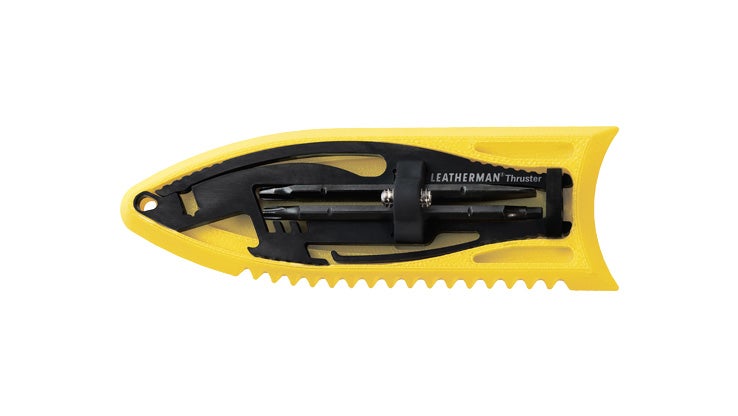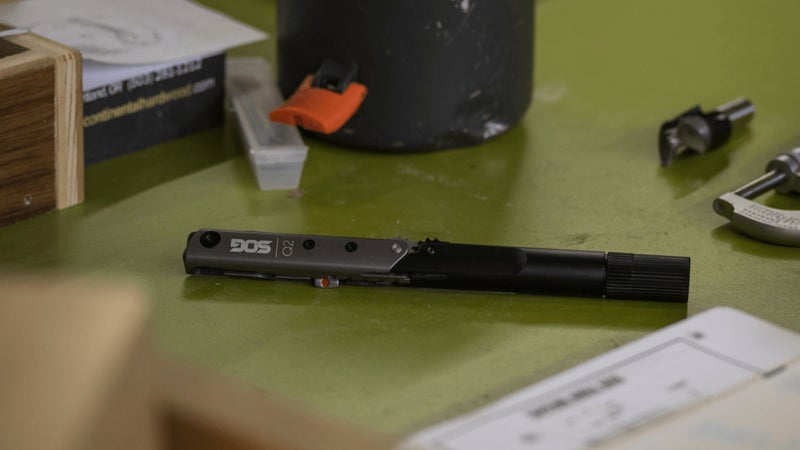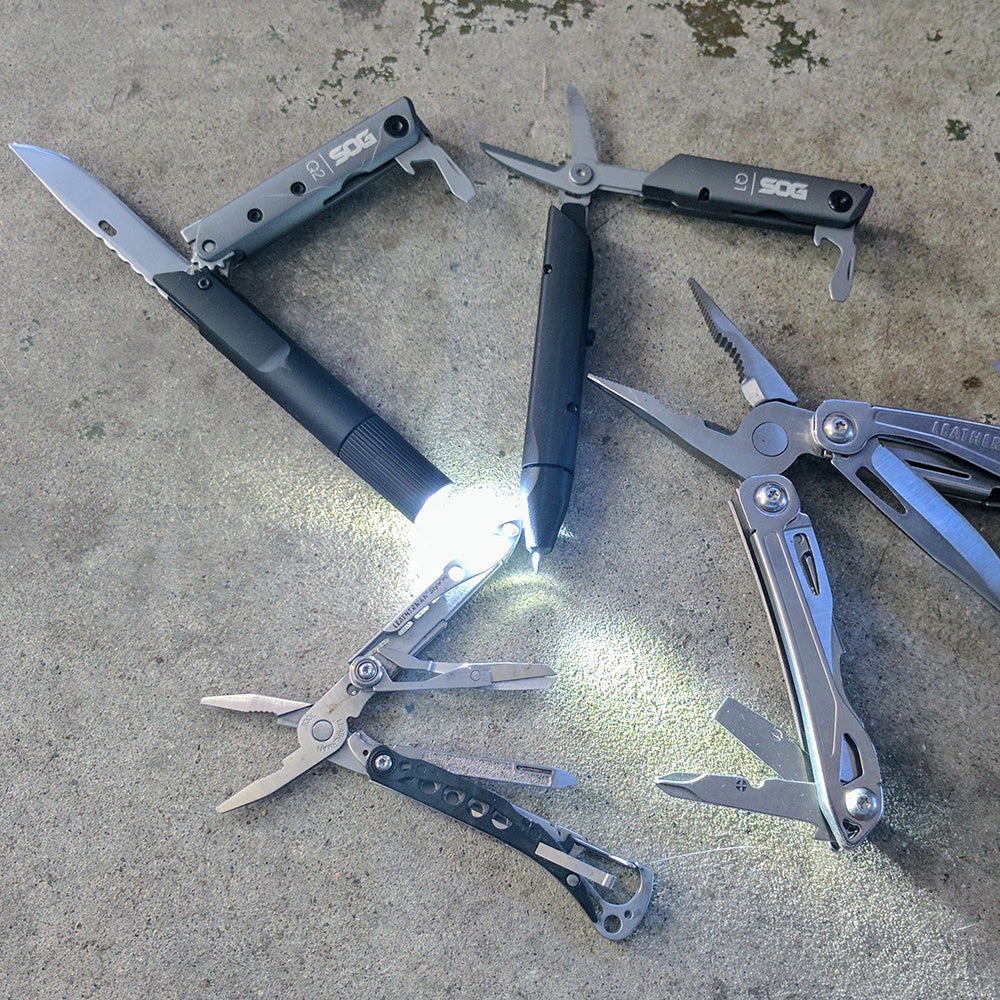Back in 1975, . Forty-two years later, his company sells $100 million of those gadgets a year, and still makes all of them in the U.S.╠ř
The trouble is, every useful person in the country already has a Charge, Juice, Surge, Wave, Skeletool, Style, or other LeathermanÔÇöor knockoffÔÇöin their pockets. Our┬áeconomy dictates that to continue to be successful, a company needs to grow. One way to do that is to subscribe to planned obsolescence. Another way is iterative product improvements.╠ř┬á┬á
But one of LeathermanÔÇÖs selling points is its 25-year guarantee. Break one of its┬átools in that time, and itÔÇÖll repair or replace it.╠řAnd after decades of gradual, user feedback-based improvements, Leatherman has neared the limits of finding new ways to package a knife blade and a pair of scissors in the handles of a plier.╠ř
So in order to keep business booming, Leatherman and other multitool companies are looking at a third option:┬ásell customers on┬ánew uses for their┬áproducts. If youÔÇÖre the industry leader, youÔÇÖre designing new products intended to be used and carried in new ways. If youÔÇÖre one of its imitators, youÔÇÖre trying to design a better mousetrap┬áin the hope┬áof redefining the category in your image.╠ř
At first, those new iterations were┬ápretty harmless. Big multitools are handy, but heavy in your pocket. So Leatherman put a smaller multitool on your keychain. If youÔÇÖre like me, you own and benefit from both.╠ř

Next came the trend for special-use multitools. Your standard multitool doesnÔÇÖt include a fin key or wax comb, so for surfers, Leatherman designed the Thruster. For archers, it designed the cam. For skaters, it designed the Jam, and so on. Small niches in the market were identified and filled. People who already owned a single multitool┬ábought more.╠ř
Multitool design steadily devolved from there. In 2015, . That piece of man jewelry┬ánever managed to be as useful as one of TimÔÇÖs original pocket tools. In its raison de etreÔÇöa multitool thatÔÇÖd be more socially acceptableÔÇöit was surpassed by the companyÔÇÖs existing range of keychain tools. , for instance, is also TSA-compliant and costs just one-tenth the price of the┬áTread.╠ř
That was the last all-new product introduced by Leatherman. But other companies have taken up where the Tread┬áleft off.╠ř
Ultra-slim tools designed to fit in your wallet have been around for a while. But┬áwith the help of crowdfunding, their ubiquitousnessÔÇöand ridiculousnessÔÇöis┬áreaching new heights.╠řDid you know thereÔÇÖs ?! Perhaps unsurprisingly, itÔÇÖs not much good at fixing stuff. Making a multitool extra slim doesnÔÇÖt actually make it easier to carry than one designed to fit on your keychain. .╠ř
This year, SOG debuted a multitool (in two sizes) . They sent one over, I cut myself trying to detach the┬álow-quality tool from the belt clip, then┬áI threw it away.╠ř

Then there's . Here's what the company says about those tools: ÔÇťThe visually subtle design and form factor makes it easy to carry and use without bringing unwanted attention to yourself or tool in the office, street, or local coffee shop.ÔÇŁ
Like the Leatherman Tread, the SOG Batons are intended to look friendlier than a traditional multitool.╠řItÔÇÖs ironic, then, that the BatonÔÇÖs form factor appears intended to replicate that of the kubotan. , kubotans are a martial arts weapon designed to deliver crippling strikes, or to force a person to submit to your will with painful pressure point attacks.╠ř
The rest of the BatonÔÇÖs design suffers from common novelty multitool problems, like poor┬áquality and poor use of available real estate. The Q2, for instance, is over six inches long, yet only makes space for a small flashlight powered by a AAA battery, a terrible┬áknife blade, and a tiny little bottle opener/flat blade screwdriver. The tools on my keychain cost less, take up less space, and are of vastly higher quality and usefulness. And this in a range of tools that runs up to $120!
What gives? , and I think he identified the problem.
ÔÇťFor Leatherman to grow and become relevant to a broader group of ages, and women, and people who live in the city, we have to be more innovative in how we approach design,ÔÇŁ he told me. ÔÇťLeatherman is largely associated with the product itself: a pair of pliers that folds up so you can put it in your pocket. The mission of our company is to improve peopleÔÇÖs lives by producing products that can prepare them for the unexpected. Pliers do not have to be the answer to every product that we do.ÔÇŁ
The problem is that Leatherman, and other multitool makers, are struggling to define who they are, in the absence of those pliers. Rather than find new ways to bring useful tools to new people, theyÔÇÖre simply finding different, inferior ways to package traditional multitool functionality. The way forward? ThatÔÇÖs way above my pay grade. But I will suggest they return to what made the multitool so popular in the first place: genuine utility.╠ř


